-
 Bitcoin
Bitcoin $84,406.3890
3.25% -
 Ethereum
Ethereum $1,880.4779
5.04% -
 Tether USDt
Tether USDt $1.0001
0.03% -
 XRP
XRP $2.1723
6.11% -
 BNB
BNB $615.3056
4.09% -
 Solana
Solana $128.7903
4.18% -
 USDC
USDC $1.0002
0.03% -
 Dogecoin
Dogecoin $0.1728
6.80% -
 Cardano
Cardano $0.6806
6.97% -
 TRON
TRON $0.2338
0.47% -
 Toncoin
Toncoin $4.1204
6.33% -
 Chainlink
Chainlink $14.0113
7.28% -
 UNUS SED LEO
UNUS SED LEO $9.2104
1.23% -
 Stellar
Stellar $0.2738
4.67% -
 Avalanche
Avalanche $19.6047
6.85% -
 Sui
Sui $2.4325
10.07% -
 Shiba Inu
Shiba Inu $0.0...01286
6.52% -
 Hedera
Hedera $0.1713
8.46% -
 Polkadot
Polkadot $4.2367
6.37% -
 Litecoin
Litecoin $84.9399
4.41% -
 Bitcoin Cash
Bitcoin Cash $313.0576
6.35% -
 MANTRA
MANTRA $6.2849
1.80% -
 Bitget Token
Bitget Token $4.6422
5.31% -
 Dai
Dai $1.0000
0.02% -
 Ethena USDe
Ethena USDe $0.9997
-0.02% -
 Pi
Pi $0.7157
4.31% -
 Hyperliquid
Hyperliquid $13.8582
9.07% -
 Monero
Monero $217.1999
1.03% -
 Uniswap
Uniswap $6.1894
6.93% -
 Aptos
Aptos $5.3745
5.09%
Detailed explanation of the working principle of block browsers
Block explorers provide a user-friendly interface to view blockchain data, connecting to full nodes to display transaction and block details accurately.
Mar 30, 2025 at 03:00 pm
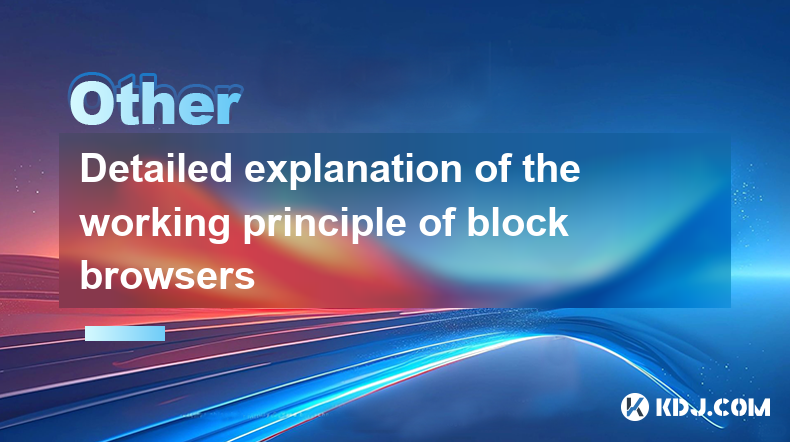
Understanding Block Explorer Functionality
Block explorers are essential tools within the cryptocurrency ecosystem. They provide a user-friendly interface to view and interact with the underlying blockchain data. This data includes transaction details, block information, and the overall state of the network. Think of them as search engines specifically designed for blockchain data, allowing anyone to investigate the history and current status of a cryptocurrency. They are crucial for transparency and verification within a decentralized system.
How Block Explorers Access and Process Blockchain Data
Block explorers function by connecting to and querying a full node of the specific blockchain they are designed for. A full node is a computer that maintains a complete copy of the blockchain's transaction history. The explorer sends requests to this node, asking for specific data points – like a transaction hash or a block height. The node then retrieves and sends back the requested information, which the explorer processes and presents in a readable format. This process ensures the data displayed is accurate and verifiable. The accuracy relies entirely on the integrity of the full node.
Key Components of a Block Explorer
Several key components work together to make a block explorer functional. These include:
API (Application Programming Interface): This allows the explorer to communicate with the blockchain's full node. It defines the methods and data formats used for requests and responses.
Database: The explorer uses a database to store and quickly retrieve frequently accessed data, improving performance. This database is populated by information received from the API.
User Interface (UI): The UI is what users interact with. It presents the complex blockchain data in a clear and intuitive way, often with charts and graphs to visualize trends.
Search Functionality: A robust search function allows users to quickly find specific transactions or blocks based on various criteria like transaction IDs, addresses, or block numbers.
The Process of Displaying Transaction Information
Let's break down how a block explorer displays transaction details:
A user inputs a transaction hash into the explorer's search bar.
The explorer sends a request via its API to the connected full node.
The full node searches its copy of the blockchain for the transaction matching the provided hash.
The node returns the transaction details (sender, receiver, amount, fees, timestamp, etc.) to the explorer.
The explorer processes this data and displays it in a user-friendly format on the screen. This might include visual representations of the transaction flow.
Exploring Block Information
Similar to transaction details, block explorers also provide comprehensive information about individual blocks. Accessing this information usually involves entering a block height or hash:
The user inputs the block height or hash.
The explorer queries the full node for the corresponding block data.
The node returns information such as the block's timestamp, the number of transactions included, the miner's address (and reward), and the block's hash.
The explorer displays this information in a structured format, often including links to individual transactions within that block.
Data Verification and Security
The reliability of a block explorer hinges on the integrity of the full node it connects to. Reputable explorers often connect to multiple nodes to enhance reliability and mitigate the risk of data manipulation. While the explorer itself doesn't validate transactions, it displays data obtained directly from the blockchain, allowing users to independently verify its authenticity. Always use trusted and well-established block explorers.
Advanced Features of Block Explorers
Many advanced block explorers offer additional features beyond basic transaction and block information. These can include:
Address Exploration: Detailed information about the transaction history of a specific cryptocurrency address.
Rich List: A ranking of addresses based on the amount of cryptocurrency they hold.
Mempool Visualization: A view of pending transactions waiting to be included in a block.
Network Statistics: Data on the overall health and activity of the blockchain network, such as hash rate and block time.
API Access: Some explorers provide APIs that allow developers to integrate blockchain data into their own applications.
Different Block Explorers for Different Blockchains
It's important to note that each blockchain has its own dedicated block explorers. A block explorer for Bitcoin will not work for Ethereum, and vice-versa. The specific features and interface may also vary depending on the explorer and the blockchain. Choosing a reputable explorer specific to the cryptocurrency you're interested in is crucial for accurate and reliable information.
Frequently Asked Questions
Q: Are block explorers safe to use?
A: Reputable block explorers are generally safe to use. However, always exercise caution and only use well-established and trusted explorers. Avoid explorers with suspicious designs or those that ask for private keys.
Q: Can block explorers reveal my personal information?
A: Block explorers show public transaction data, which includes sender and receiver addresses. While these addresses are not directly linked to personal identities, it's possible to link them indirectly through other means. Therefore, it's important to understand the privacy implications of using cryptocurrencies.
Q: How often is the data on block explorers updated?
A: The update frequency varies depending on the specific explorer and the blockchain's block time. Most explorers update their data within seconds or minutes of a new block being added to the blockchain.
Q: Can I trust the data shown on a block explorer?
A: The data shown is generally reliable, as it's obtained directly from the blockchain. However, the accuracy depends on the integrity of the full node the explorer connects to. Using a reputable explorer that connects to multiple nodes increases reliability.
Q: What if I find an error in the data on a block explorer?
A: If you suspect an error, you should report it to the block explorer's developers or administrators. You can also independently verify the data by checking it against other explorers or directly examining the blockchain data using a full node.
Disclaimer:info@kdj.com
The information provided is not trading advice. kdj.com does not assume any responsibility for any investments made based on the information provided in this article. Cryptocurrencies are highly volatile and it is highly recommended that you invest with caution after thorough research!
If you believe that the content used on this website infringes your copyright, please contact us immediately (info@kdj.com) and we will delete it promptly.
- Circle Internet Financial, the Entity Behind the USD Coin (USDC) Stablecoin, Is Taking a Significant Step Towards Public Markets
- 2025-04-01 18:10:12
- The Pi Coin's price has been a subject to rapid fluctuations
- 2025-04-01 18:10:12
- Bitcoin Could Supplant the Dollar as the World's Benchmark
- 2025-04-01 18:05:12
- President Trump's Sons Don Jr. and Eric Trump Have Invested in a Bitcoin Mining Venture
- 2025-04-01 18:05:12
- Key Insights: A Reuters report notes that President Donald Trump's family in January gained control of World Liberty Financial (WLF), a crypto venture that raised over half a billion dollars.
- 2025-04-01 18:00:11
- Elon Musk Rules Out US Government's Use of Dogecoin (DOGE)
- 2025-04-01 18:00:11
Related knowledge
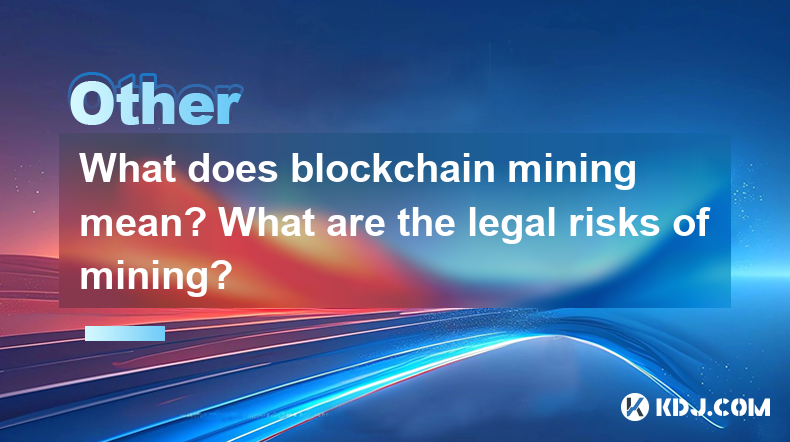
What does blockchain mining mean? What are the legal risks of mining?
Mar 31,2025 at 05:07pm
Blockchain mining is the process by which transactions are verified and added to the public ledger, known as the blockchain. Miners use powerful computers to solve complex mathematical problems, which, once solved, allow them to add a block of transactions to the blockchain. In return, miners are rewarded with cryptocurrency, typically Bitcoin. This pro...
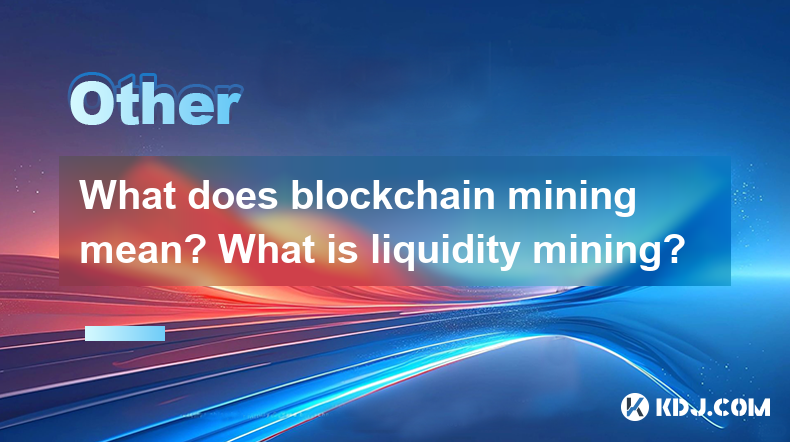
What does blockchain mining mean? What is liquidity mining?
Apr 01,2025 at 12:07am
What is Blockchain Mining?Blockchain mining is a critical process in the world of cryptocurrencies, particularly for networks like Bitcoin and Ethereum. It involves the use of computational power to solve complex mathematical problems, which in turn validates transactions and adds them to the blockchain. Miners are incentivized through rewards, typicall...
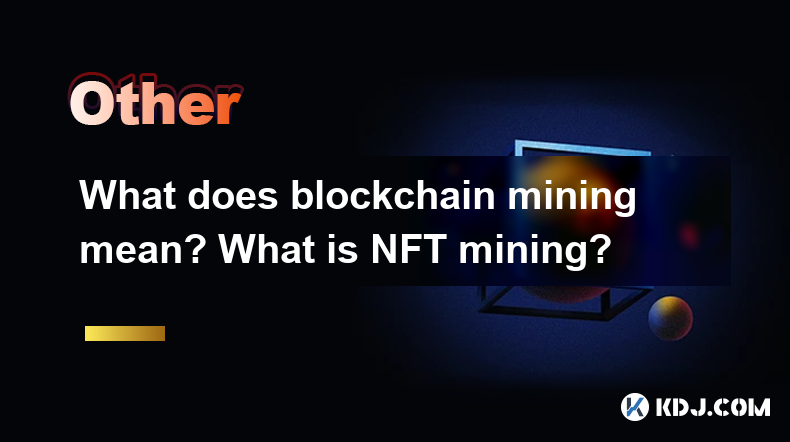
What does blockchain mining mean? What is NFT mining?
Mar 31,2025 at 04:07pm
Blockchain mining is a crucial process in the world of cryptocurrencies, particularly for networks like Bitcoin and Ethereum. It involves verifying transactions and adding them to the blockchain, a decentralized ledger. Miners use powerful computers to solve complex mathematical problems, which, when solved, allow them to add a block of transactions to ...

What does blockchain mining mean? What is the difference between cold wallets and hot wallets for mining?
Apr 01,2025 at 07:56am
Blockchain mining is a critical process in the world of cryptocurrencies. It involves verifying transactions and adding them to the blockchain, a decentralized ledger. Miners use powerful computers to solve complex mathematical problems, which, when solved, allow them to add a block of transactions to the blockchain. In return, miners are rewarded with ...
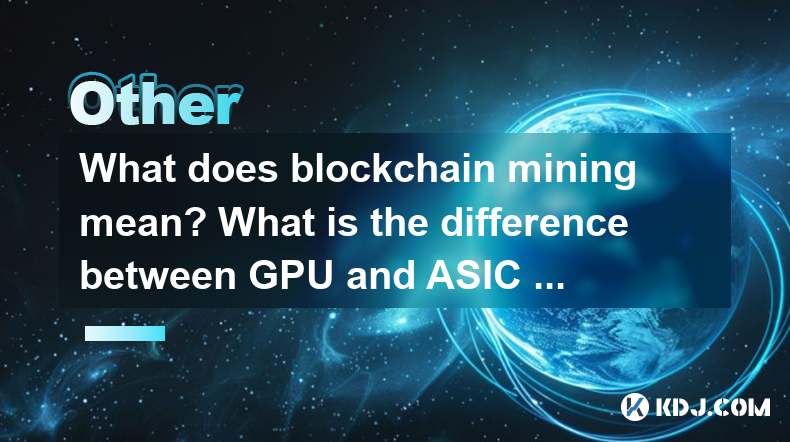
What does blockchain mining mean? What is the difference between GPU and ASIC mining?
Apr 01,2025 at 11:56am
Blockchain mining is a crucial process in the world of cryptocurrencies, particularly for networks like Bitcoin and Ethereum. At its core, mining involves solving complex mathematical problems to validate transactions and add them to the blockchain, a decentralized ledger. Miners compete to solve these problems, and the first to succeed is rewarded with...
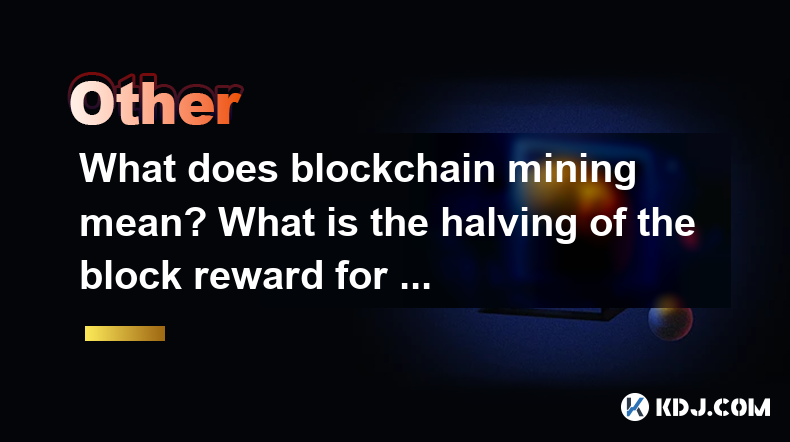
What does blockchain mining mean? What is the halving of the block reward for mining?
Mar 31,2025 at 03:43pm
Blockchain mining is a crucial process in the world of cryptocurrencies, particularly for networks like Bitcoin. It involves solving complex mathematical problems to validate transactions and add them to the blockchain, a public ledger of all cryptocurrency transactions. Miners use powerful computers to compete in solving these problems, and the first t...

What does blockchain mining mean? What are the legal risks of mining?
Mar 31,2025 at 05:07pm
Blockchain mining is the process by which transactions are verified and added to the public ledger, known as the blockchain. Miners use powerful computers to solve complex mathematical problems, which, once solved, allow them to add a block of transactions to the blockchain. In return, miners are rewarded with cryptocurrency, typically Bitcoin. This pro...

What does blockchain mining mean? What is liquidity mining?
Apr 01,2025 at 12:07am
What is Blockchain Mining?Blockchain mining is a critical process in the world of cryptocurrencies, particularly for networks like Bitcoin and Ethereum. It involves the use of computational power to solve complex mathematical problems, which in turn validates transactions and adds them to the blockchain. Miners are incentivized through rewards, typicall...

What does blockchain mining mean? What is NFT mining?
Mar 31,2025 at 04:07pm
Blockchain mining is a crucial process in the world of cryptocurrencies, particularly for networks like Bitcoin and Ethereum. It involves verifying transactions and adding them to the blockchain, a decentralized ledger. Miners use powerful computers to solve complex mathematical problems, which, when solved, allow them to add a block of transactions to ...

What does blockchain mining mean? What is the difference between cold wallets and hot wallets for mining?
Apr 01,2025 at 07:56am
Blockchain mining is a critical process in the world of cryptocurrencies. It involves verifying transactions and adding them to the blockchain, a decentralized ledger. Miners use powerful computers to solve complex mathematical problems, which, when solved, allow them to add a block of transactions to the blockchain. In return, miners are rewarded with ...

What does blockchain mining mean? What is the difference between GPU and ASIC mining?
Apr 01,2025 at 11:56am
Blockchain mining is a crucial process in the world of cryptocurrencies, particularly for networks like Bitcoin and Ethereum. At its core, mining involves solving complex mathematical problems to validate transactions and add them to the blockchain, a decentralized ledger. Miners compete to solve these problems, and the first to succeed is rewarded with...

What does blockchain mining mean? What is the halving of the block reward for mining?
Mar 31,2025 at 03:43pm
Blockchain mining is a crucial process in the world of cryptocurrencies, particularly for networks like Bitcoin. It involves solving complex mathematical problems to validate transactions and add them to the blockchain, a public ledger of all cryptocurrency transactions. Miners use powerful computers to compete in solving these problems, and the first t...
See all articles























































































